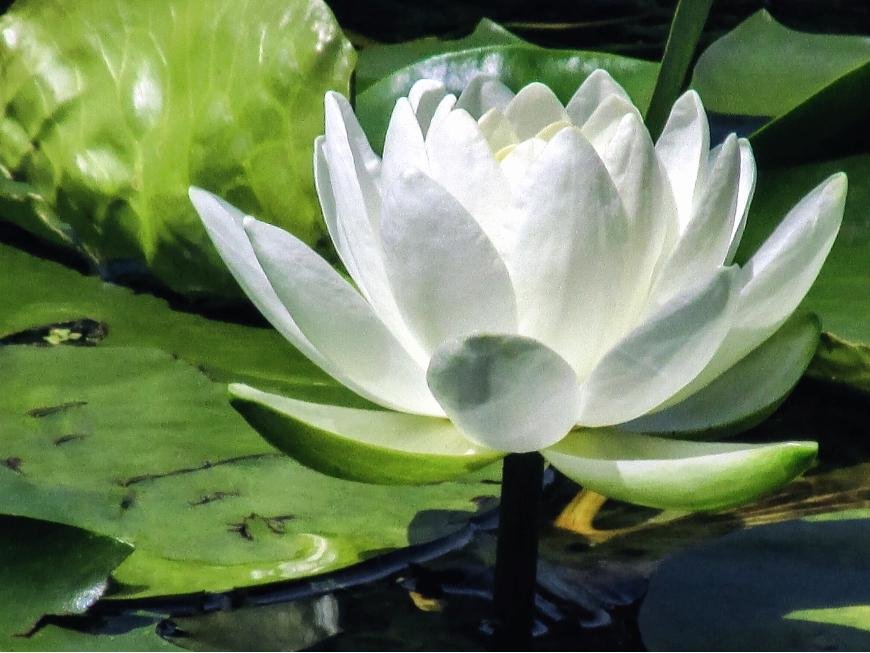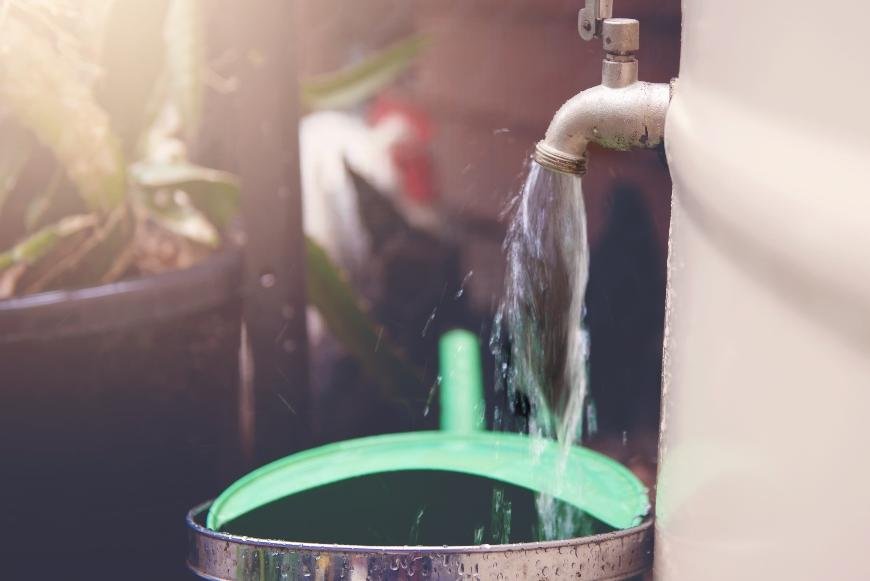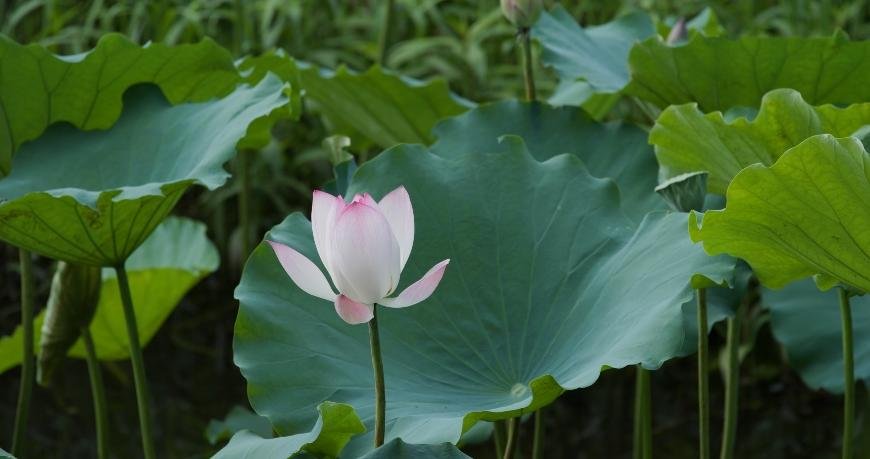How to grow White Lotus
Learn how to grow white lotus with our beginner's guide, covering location, soil prep, planting tips, and more for a thriving water garden.

Are you intrigued by the idea of learning how to grow white lotus plants? These stunning, sacred flowers are not only visually captivating but also have a rich history and cultural significance. In this comprehensive guide on growing lotus, we will walk you through every step necessary for cultivating these beautiful perennial pond plants.
From choosing the right location and preparing the soil to planting, watering, fertilizing, and controlling pests and diseases – we've got you covered. You'll even learn about harvesting and curing your white lotus flowers so that they can be used in various ways or simply enjoyed as part of your water garden.
Dive into our detailed instructions below to embark on an enchanting journey with these mesmerizing national flower symbols that rival water lilies in their elegance.
Table of Contents:
- Choosing the Right Location
- Preparing the Soil
- Watering and Fertilizing
- Controlling Pests and Diseases
- Harvesting White Lotus
- Curing White Lotus
- How to Grow White Lotus
- Conclusion
1. Choosing the Right Location
Growing a beautiful and healthy white lotus starts with selecting the perfect location for your plant. These aquatic perennials thrive in shallow ponds or water gardens, so consider installing one if you don't already have it. When choosing a spot for your pond or water garden, keep these factors in mind:
- Sunlight: Lotus plants require at least six hours of direct sunlight daily to produce their stunning flowers.
- Water depth: The ideal depth for growing lotuses is between 12 and 18 inches (30-45 cm).
- Pond size: Ensure that there's enough space for your lotus to grow without overcrowding other pond plants like water lilies.
Selecting an appropriate location will set the stage for successfully cultivating this sacred national flower.
When selecting a suitable locale for cultivating white lotus, factors such as soil composition and climate should be taken into account. Moving on, preparing the soil is an essential step in ensuring successful growth of your white lotus plants.
2. Preparing the Soil
To successfully grow lotus plants, it's essential to prepare the soil correctly. The ideal soil for these perennial lotuses is a mix of clay and loam, which provides proper drainage and nutrient retention. Start by filling your water garden or pond with at least 6 inches of this potting soil mixture.
- Add organic matter such as compost or well-rotted manure to improve fertility.
- Use a slow-release fertilizer specifically designed for aquatic plants like water lilies and sacred lotus.
- Avoid using chemical fertilizers that can harm pond life and lead to an imbalance in the ecosystem.
Maintaining healthy soil conditions will promote strong growth in your lotus plant, ultimately resulting in beautiful blooms throughout its growing season. If you're interested in growing lotus from seeds, check out our lotus seeds selection.
Preparing the soil is essential for successful growth of white lotus, so make sure to do it properly. Planting White Lotus requires special attention as well; proper placement and care are key factors in achieving a healthy harvest.
3. Planting White Lotus
Planting white lotus can be done using either seeds or bulbs. To start from lotus seeds, soak them in warm water for 24 hours, then file the seed coat until you see a cream-colored core. Place the filed seeds in shallow water and wait for germination to occur within 1-2 weeks.
If planting with bulbs, choose healthy specimens free of mold or damage. Fill a container with at least 6 inches of rich potting soil and gently press the bulb into it, leaving its growing tip exposed above the soil surface.
The optimal time to set in your lotus is when temperatures are consistently over 60°F (15°C) during the springtime. Once planted, place your container in a pond or water garden where it will receive full sunlight throughout the day.
Planting White Lotus is an important step in the cultivation of this beautiful flower. Watering and fertilizing correctly is essential for the best growth and health of your White Lotus.
4. Watering and Fertilizing

Growing lotus plants requires a delicate balance of water and nutrients to ensure their health and beauty. To maintain the proper water level, make sure your pond plants are submerged in at least 6 inches of water, with an additional 3-4 inches for larger varieties like the sacred lotus.
- Water: Monitor the pond's water level regularly, especially during hot summer months when evaporation is high. Refill as needed to keep your lotuses hydrated.
- Fertilizer: Use a slow-release fertilizer specifically designed for aquatic plants or water lilies. Periodically replenish your water garden with a slow-release fertilizer tailored for aquatic plants or lilies to ensure optimal growth and a tranquil atmosphere.
A well-maintained water garden will not only help your white lotus thrive but also create a serene environment perfect for relaxation and contemplation. If you want to grow lotus, make sure to use potting soil that is suitable for perennial lotuses. Lotus seeds can be planted in the soil and will grow into beautiful lotus flowers.
Proper watering and fertilizing are essential for the successful growth of white lotus. With proper pest and disease control, you can ensure that your plants stay healthy and produce a quality yield.
5. Controlling Pests and Diseases
The beautiful white lotus plants can be affected by various pests and diseases, which may hinder their growth or even cause them to die. Some common issues include aphids, spider mites, and fungal infections like leaf spot.
- Spider mites: These tiny creatures feed on the plant's sap, causing yellowing leaves and stunted growth. To control them, use insecticidal soap or neem oil.
- Aphids: They also suck sap from the plant leading to distorted leaves and reduced vigor. Insecticidal soaps or natural predators like ladybugs are effective in controlling aphid infestations.
- Fungal infections: Ensure proper air circulation around your pond plants to prevent these diseases. Remove infected parts of the plant immediately to stop further spread.
Maintaining a clean water garden environment is essential for keeping your sacred lotus healthy and thriving. If you want to grow lotus successfully, you need to be vigilant about pests and diseases. Remember to check your lotus plants regularly for any signs of infestation or infection. By taking prompt action, you can prevent these issues from becoming a major problem.
Controlling pests and diseases is an important part of growing white lotus, as it can help ensure a successful harvest. With that in mind, the next step is to learn about harvesting white lotus for maximum yield.
6. Harvesting White Lotus
Growing lotus plants is a rewarding experience, and harvesting your own white lotus flowers, leaves, or roots can be quite fulfilling. To ensure you get the most out of your harvest, follow these simple steps:
- Timing: The best time to harvest white lotus flowers is when they are in full bloom, typically between June and September. Leaves can be harvested throughout the growing season as needed.
- Technique: Use clean, sharp scissors or pruning shears to cut the stems close to their base without damaging nearby growth.
- Cleaning and Storage: Gently rinse harvested parts under cool water to remove any dirt or debris. Pat them dry with a clean towel before storing in an airtight container away from direct sunlight and heat sources.
For further info on maintaining your white lotus harvest for extended periods, have a look at our guide about treating the plant.
Harvesting White Lotus requires careful attention to detail and an understanding of the plant's needs. Gaining the necessary insight, it is possible to bring in a bountiful yield. Now let us turn our focus towards curing this precious crop for maximum potency and flavor; a task equally as important as harvesting itself.
7. Curing White Lotus
Curing white lotus flowers or leaves is essential for preserving their potency and flavor. The process involves drying the plant material in a controlled environment to prevent mold growth and degradation of active compounds. Follow these steps to properly cure your harvested white lotus:
- Air-drying: Spread the flowers or leaves evenly on a clean surface, such as a tray or screen, ensuring they don't overlap. Put the harvested white lotus in a spot that is not exposed to direct sunlight and where air circulation is good.
- Temperature control: Maintain an ambient temperature between 60-70°F (15-21°C) during the curing process.
- Humidity control: Keep humidity levels around 50% by using a dehumidifier if necessary.
- Daily checkup: Inspect your white lotus daily for any signs of mold or decay, removing affected parts immediately.
The curing process typically takes about two weeks but can vary depending on environmental conditions. Once completely dry, store your cured white lotus in an airtight container away from light and heat sources to preserve its quality. Learn more about drying aquatic plants here.
How to Grow White Lotus

If you want to grow white lotus, you need to choose a suitable location with full sun exposure and still water. Follow these steps to grow lotus plants:
- Select an appropriate location with sunlight and calm water.
- Prepare the soil mixture of garden soil and clay in equal parts.
- Plant rhizomes or seeds in containers filled with prepared soil mix.
- Submerge planted containers underwater at a shallow depth initially.
- Maintain proper watering levels as plants develop leaves above water surface.
- Fertilize regularly during growing season using aquatic plant fertilizer tablets.
Lotuses require warm temperatures (above 60°F/15°C), full sun exposure for at least six hours daily, still water bodies like ponds or large containers without strong currents to thrive. They also need nutrient-rich loamy-clayey soils that retain moisture well but allow excess water to drain away.
You can grow a lotus indoors if you provide adequate light through natural sunlight from windows or artificial lighting such as LED lights. Use a large, deep container filled with water and appropriate soil mix to plant the lotus seeds or rhizomes. Maintain proper temperature, watering, and fertilization for optimal growth.
Conclusion
As a modern-day blog editor experienced with SEO and writing in an active voice, I am excited to present this guide on how to grow white lotus for Azarius. Whether you're a seasoned gardener or a beginner, this guide will provide you with the necessary steps to cultivate this beautiful and sacred plant.
Firstly, it's important to choose the right location for your lotus plants. They require a lot of sunlight and warm temperatures, so make sure to plant them in a spot that receives at least six hours of direct sunlight per day. Additionally, lotus plants thrive in shallow water, so consider planting them in a pond or water garden with a depth of around 2-3 feet.
When it comes to planting lotus seeds, it's best to do so in the spring or early summer. Soak the seeds in warm water for 24 hours before planting them in a pot filled with potting soil. Make sure to keep the soil moist and warm, and within a few weeks, you should see the lotus plant begin to sprout.
As perennial lotuses, these plants require a lot of care and attention. Make sure to fertilize them regularly and keep the soil moist. Additionally, be sure to remove any dead or decaying leaves to prevent the spread of disease.
After several months, you should begin to see the lotus flowers bloom. These beautiful flowers are not only aesthetically pleasing but also hold spiritual significance as the national flower of India. Once the flowers have bloomed, it's time to harvest them. Cut the flowers at the base of the stem and allow them to dry in a cool, dark place for several weeks.
Finally, it's important to note that lotus plants are often confused with water lilies. While they may look similar, they are not the same plant. Lotus plants have a distinct seed pod in the center of the flower, while water lilies do not.




































































































































